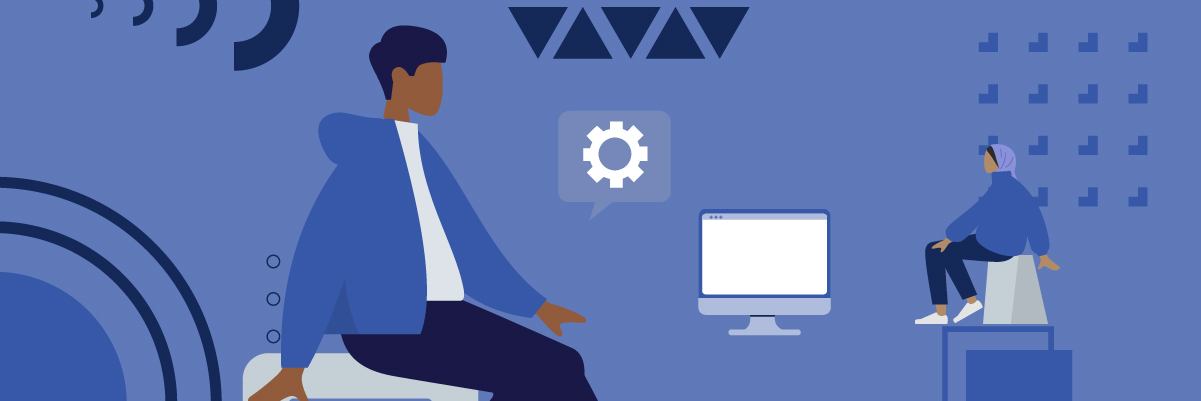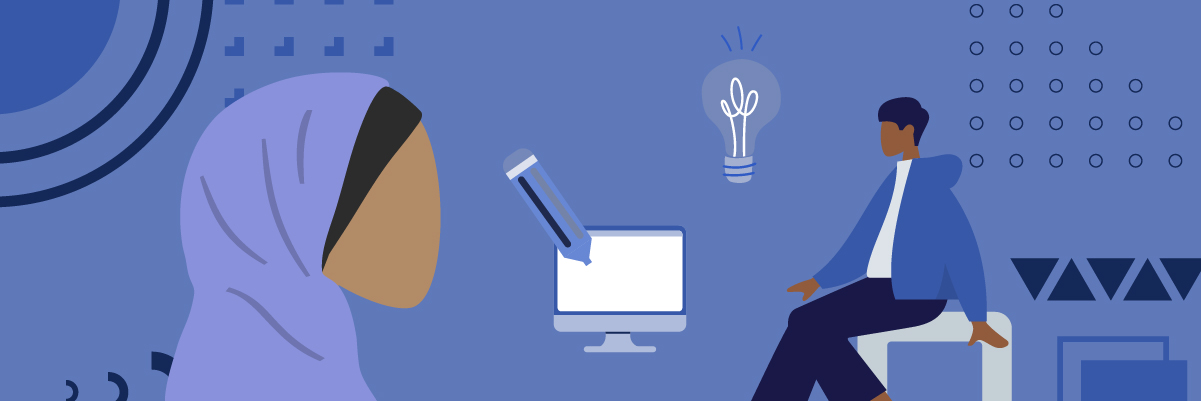UX design may not be what immediately springs to mind when we think about great products and services. But make no mistake, when it comes to making things work like a dream, it’s pretty much the backbone of the whole process. If you’ve ever had a great experience using an app, website, or service, you can bet your bottom dollar that a UX expert spent night and day tinkering with the nuts and bolts of the design to make it feel great in all the right ways.
And that’s the core of UX design in a nutshell: empathy. These designers are powerful empaths who put your needs as a user first and foremost. They utilize systems that help them create virtual run-throughs of what a user — such as yourself — would do. Then, they leverage their knowledge of UX dos and don’ts as they strive to create a working model that serves as the blueprint for the broader design process. This mix of experience and intuition is what makes them invaluable assets.
In short, UX design is the launchpad for the execution of a complete, top-to-bottom design process. It endeavors to understand the rationale behind users’ decisions and to anticipate their every move. By understanding how people operate when using an interface, it allows designers to optimize it, tweak it into spit-polished perfection.
If you’re looking to understand the nuts and bolts of what makes UX design necessary, you’re in luck. Not only do we have some of the best UX designers in the business at Bunny Studio, but they’re also not shy about sharing their knowledge with the public. We’ve put together an awesome guide with all the basics, just for you!
Need UX designers for your projects? Get in touch with us today!

OK, So What is UX Design in a Nutshell?
Right, for all of my talk about UX design and empathy, we still need a professional definition. After all, there’s still plenty of confusion when it comes to the field. If you were to stop 100 people on the street and ask them about this type of design, maybe 3 would know.
And this is because great UX design is, in a way, invisible to most people. It’s not about color schemes, spacing, lettering, or visual design principles. Don’t get me wrong, though, these things still matter and are within a UX designer’s frame of knowledge. But their task encompasses plenty more. At the end of the day, they have to take into account many more factors than just beauty or function.
So, UX design is about the interaction between people and the products, services, apps, or machines they use every day. It’s a discipline that combines aspects of human psychology, business, market research, design, and technology.
The idea is to make the user’s experience as seamless, painless, and hassle-free as possible. While you could conceivably ask yourself “how hard could it be?” the answer is “more than you think”. After all, we already live in a world where UX has become rather standardized, and our everyday experience is enhanced by decades of trial-and-error. Even today, it’s a painstaking task that is easier said than done.
It almost should go without saying that UX design has always been around in some shape or form. But, the industrialized, modern-day form we know now only came about in the 90s.
A Bit of History on UX Design
UX design as a term is fairly new and actually dates back to “just” the early 90s. Yeah, sue me, I was around in 1991, Centennials. The person responsible for coining the term was Don Norman, a cognitive scientist working for Apple.
Don Norman was interested in all aspects of a user’s experience with a product or service, including industrial design, graphics, the interface, and physical interaction. To encompass all of the different elements that determine how a user feels while interacting with a product, he came up with the term “user experience”.
Of course, we could say that while the term is new, the idea isn’t. The thought of simplifying and streamlining devices and processes has been with human beings from day one. Just think about the millenary discipline of Feng Shui, where harmony and the optimal use of space take center stage. And this was pretty much universal in some way or form across all of humanity, no doubt.
And, again, we could say that in a way UX design has been with us ever since someone figured out that small modifications to existing things could bring about quality-of-life improvements. Nowadays, with our industrialized, free-for-all knowledge databases, we have more tools at our disposal. That means that it’s easier than ever to provide your users with an optimized experience.
And, even better; we have millions of good examples that follow UX design best practices. With the availability of information at our fingertips, we’ve made it simpler to level the playing field.
What Does UX Design Look Like in Practice?
The best way to visualize UX design is to imagine practical cases. You’ve probably used Amazon a million times, and thus become accustomed to how much some of its features help you find you look what you’re after.
- A good search bar function. This includes filters by location, price, weight, etc.
- They require product pictures and descriptions to follow certain standards. Why? Homogeneity breeds a certain kind of familiarity. This helps prevent everybody from following different design practices and sensibilities. Moreover, it keeps things simple and easier to follow for users. And from messing up and using low-quality images or poor product descriptions. That just won’t fly with Amazon.
- A practical purchasing system. This means that everything from adding a product to your cart to making a credit card purchase is made simple and takes just a few clicks.
Now, I could add many more subtle steps that also make for great UX design in Amazon pages. And, of course, they added all of these through multiple iterations; we’ve probably learned more about UX design in the past few decades than in all other eras combined, thanks to the ubiquity of the internet. Amazon wasn’t always the giant it is today, and they’ve learned right along with the rest of us.
But, just imagine if any one of these features were missing. Imagine a website with bad pictures, a chaotic design scheme where every vendor is free to do whatever, no search filters, and you had to reach out to a customer service representative on the phone in order to complete a purchase.
If a product or service is easy to use and has the least amount of steps necessary to get from A to Z, it’s got good UX; if not, it’s probably in need of plenty of improvement. And don’t get me wrong, there’s always room for improvement. But after some time you start to get an idea of whether the average user feels comfortable using your product or not.
A UX Designer’s Job
So, now we’ve got that out of the way, what does a UX design pro do? What are the tasks that allow them to create a well-thought-out user experience? This is going to seem like a lot if you thought that a designer just made things look good (that comes in later):
1) They Analyze Competitors
You just won’t get anywhere if you don’t get a handle on what the competition is doing. What are their strengths and weaknesses? How much market share do they have influence over? Is there an intersection in customer types?
2) Customer Analysis
How does the typical customer behave? What are their goals, expectations, and consuming habits? How will they interact with the product or service?
3) They Create Customer Personas and Research Information Architecture
A good UX designer has to know the “typical”, or most likely types of users that will interact with the product or service. These personas serve as a basis for designing usability strategies. Also, they structure the information that’s going to be presented to users in a logical, clear way that maximizes flow.
According to Career Foundry:
Next, you’ll start thinking about the kind of content needed and how it will be structured across the website or app. This is what’s known as information architecture; working out the most logical layout and organization of the content. A good information architecture makes sure that the user can easily find what they’re looking for and intuitively navigate from one page to the next without too much though.
4) User Flows and Wireframes
These are “maps” and flowcharts that trace the course of a user’s journey. From beginning to end, UX design experts can map out all of the expected behaviors.
5) Prototypes
These are basically mock-ups of what the end result will look like. They don’t have to be functional, but they need to represent a broad-strokes idea of what a user will encounter. They also serve as the basis for the rest of the development team (UI designers, full-stack developers, etc.)
This part also includes user testing. Often, UX designers find that the gap between expectation and reality is pretty big. There’s also plenty of tweaking going on, and the struggle never ends!

6) Visual Design
If you’re thinking that nothing above is what you would normally consider design, you’re right! Career Foundry clarifies:
While some UX designers will also specialize in visual design, it tends to fall under user interface (UI) design. So, the final imagery, color schemes, icons, and typography will usually be taken care of by a UI designer.
I’d also like this opportunity to note that front-end and back-end development also happens at this stage of the game. Starting to see the importance of UX design in the grand scheme of things?
Where do I Find Me a UX Design Pro?
UX design is always in demand, and that’s not going to go away. In fact, UX designers typically make over 75 grand a year, on average. If anything, the need for great UX design experts is rising without any signs of slowing down.
Also, as you’ve seen, their wide array of skills and professional competencies doesn’t exactly grow on trees. If you’ve got a project in the works that needs the right UX design expert to make it happen in a way that makes your users happy, you can’t go around leaving it to chance.
Why not reach out to us at Bunny Studio? We have an amazing team of UX design pros ready to cover the whole process for you, all the way from analyzing your competitors to great visual design, and even more. We always go beyond what’s on the menu!
Submit a project with Bunny Studio today and hire the right UX design expert for the job!











